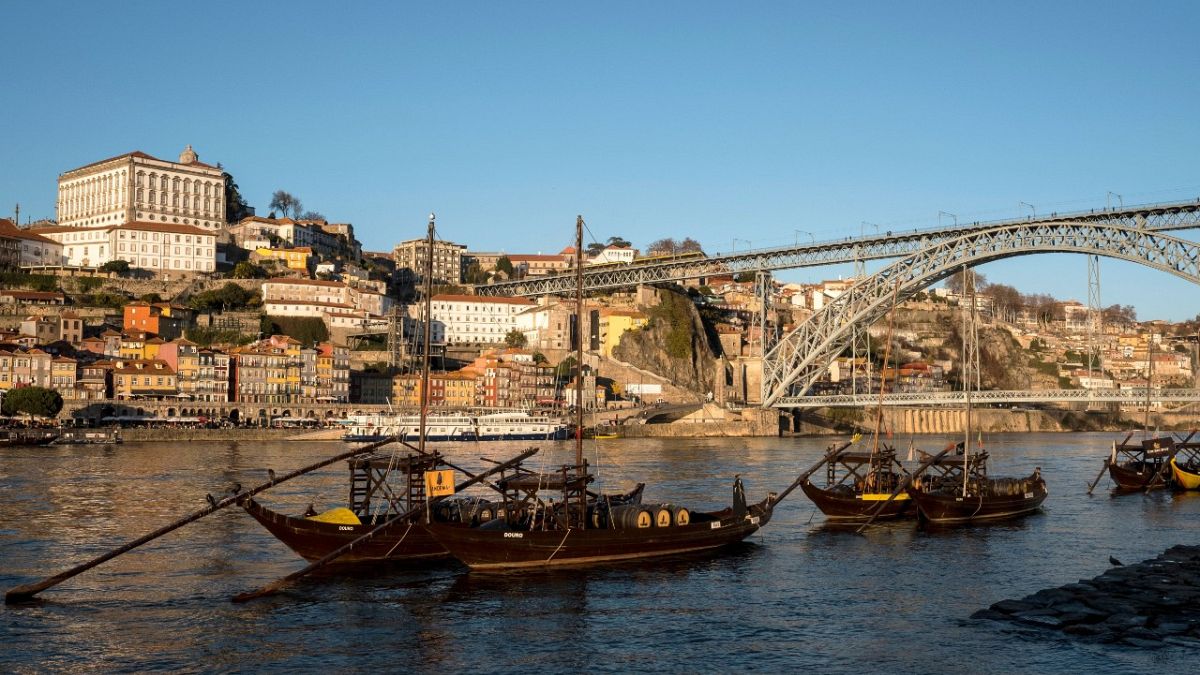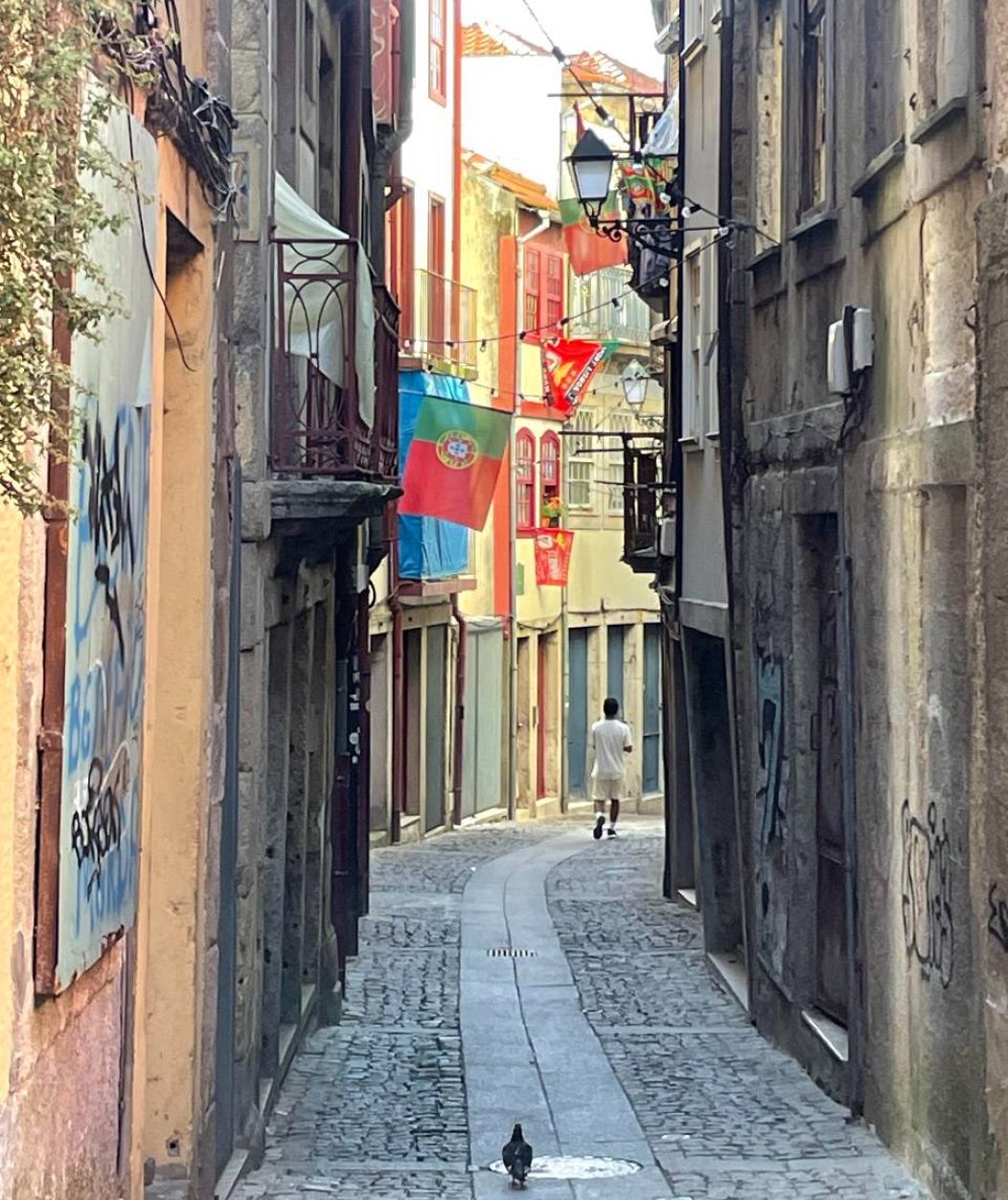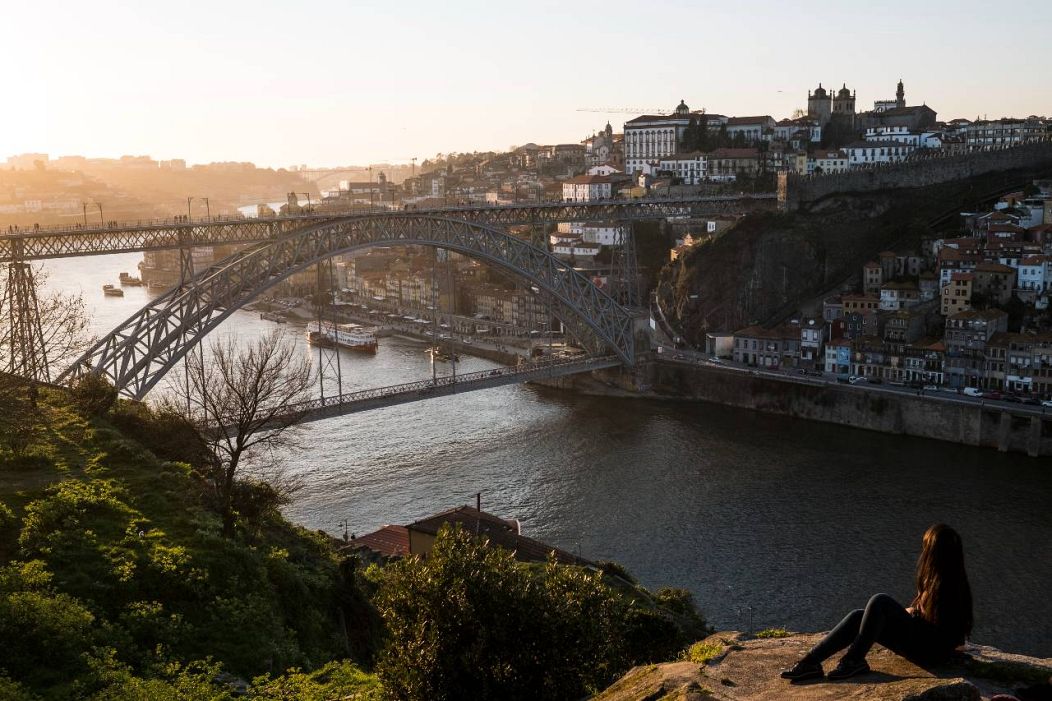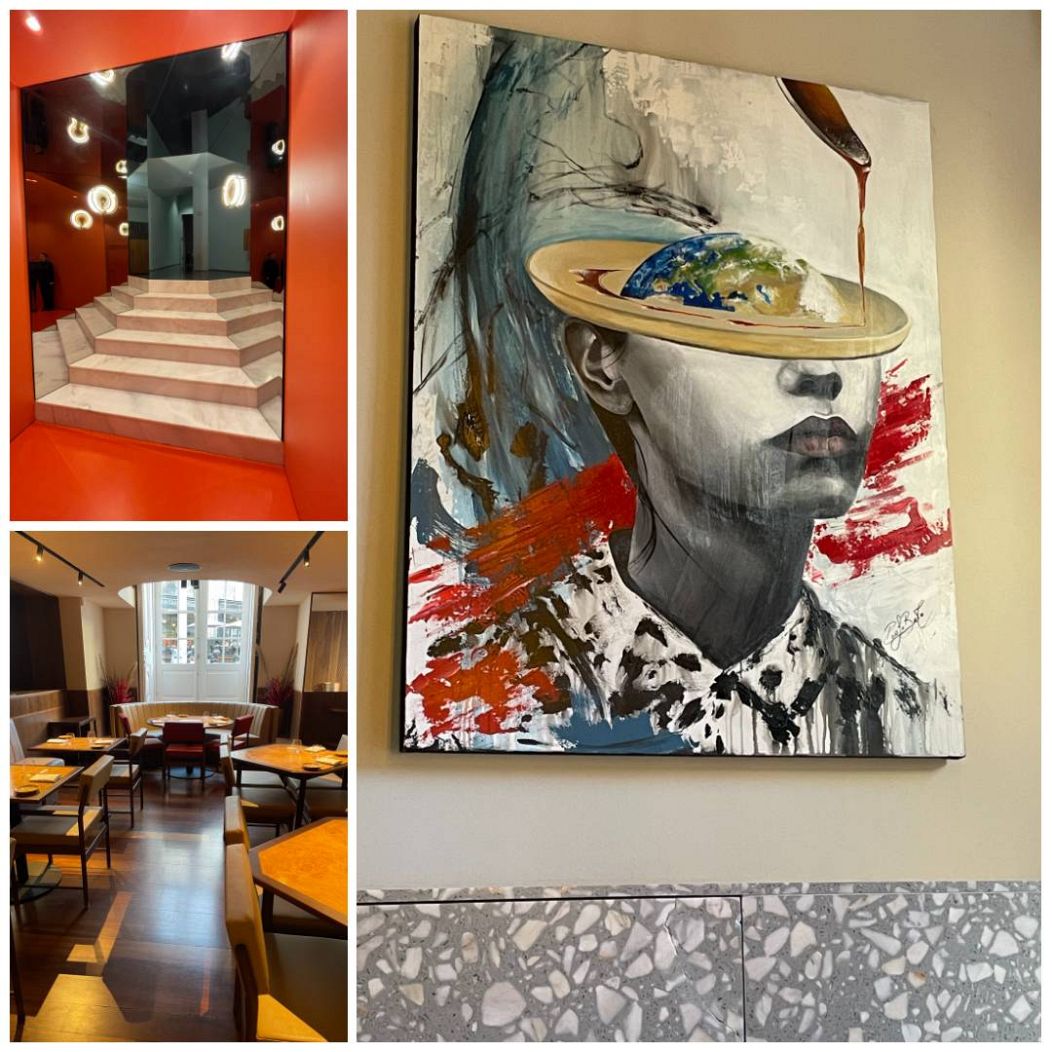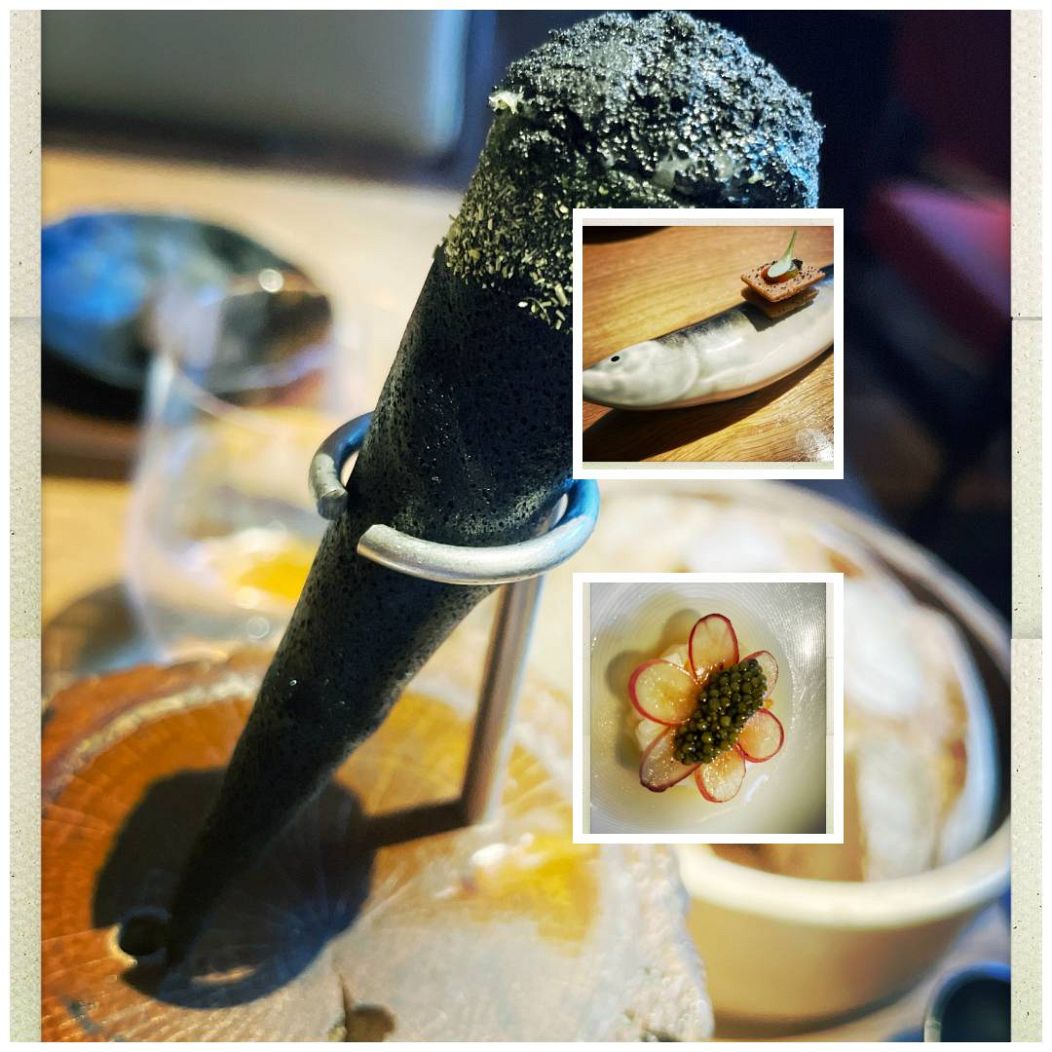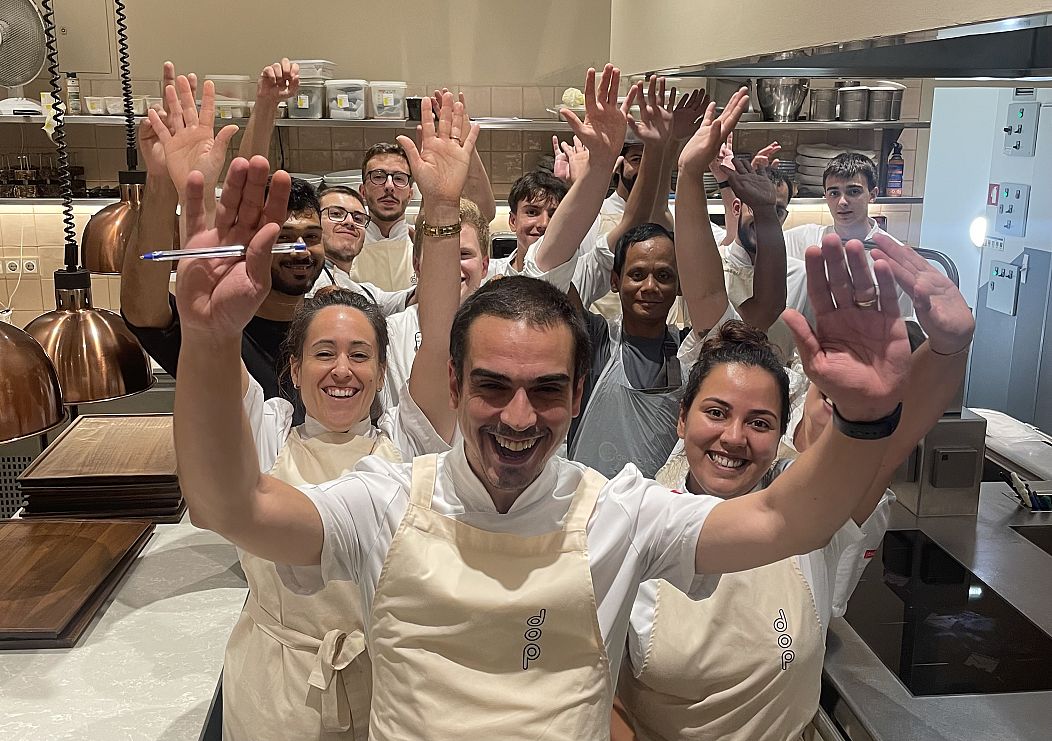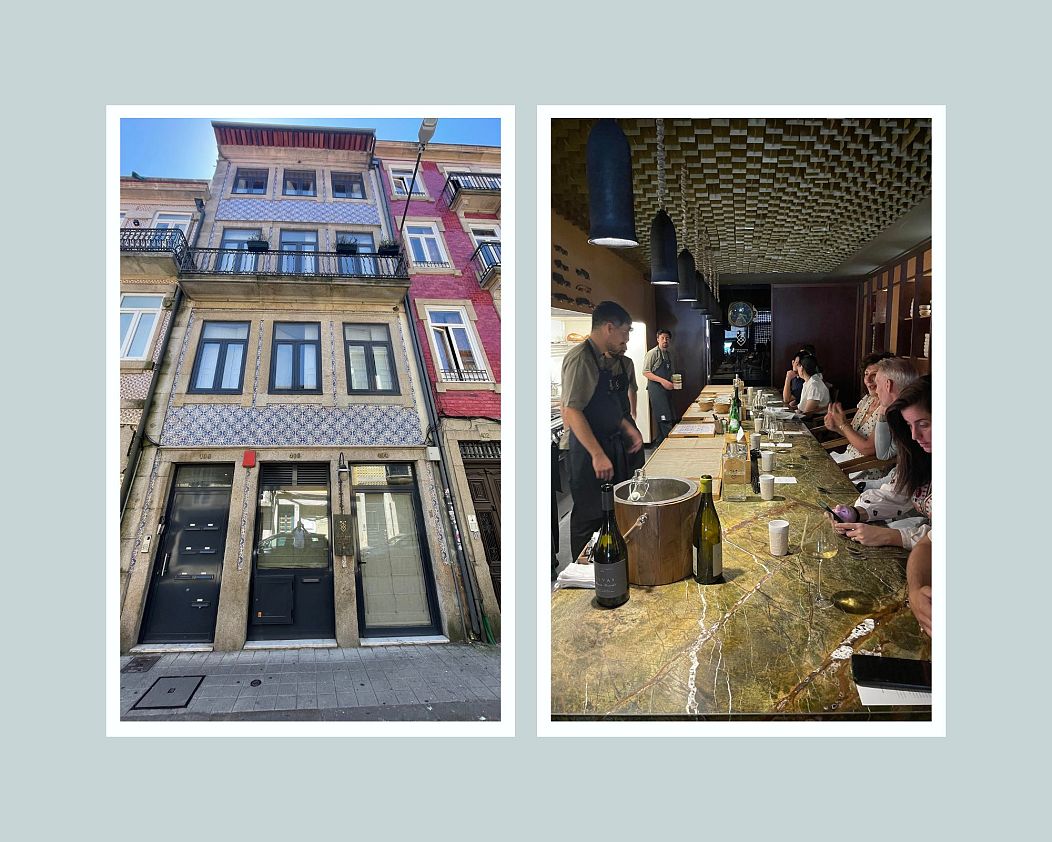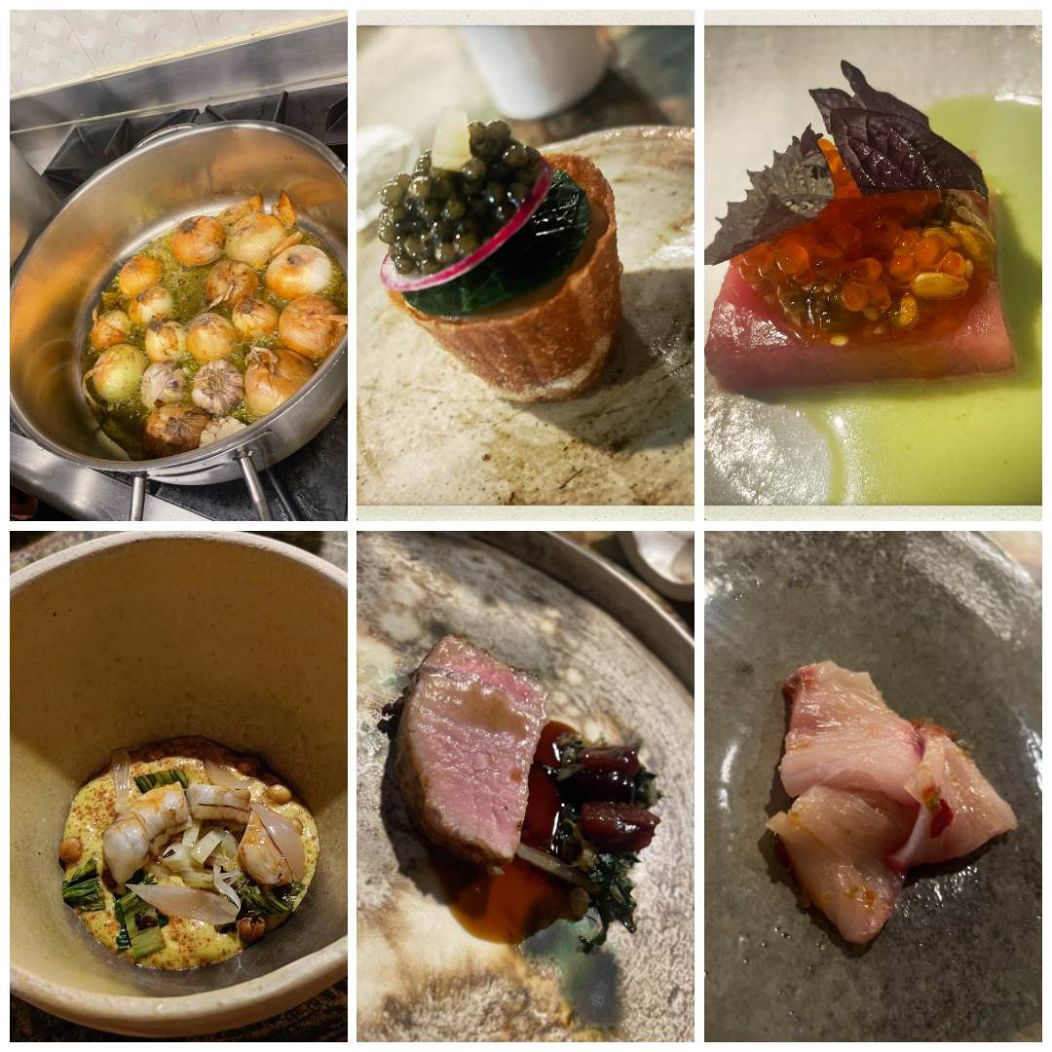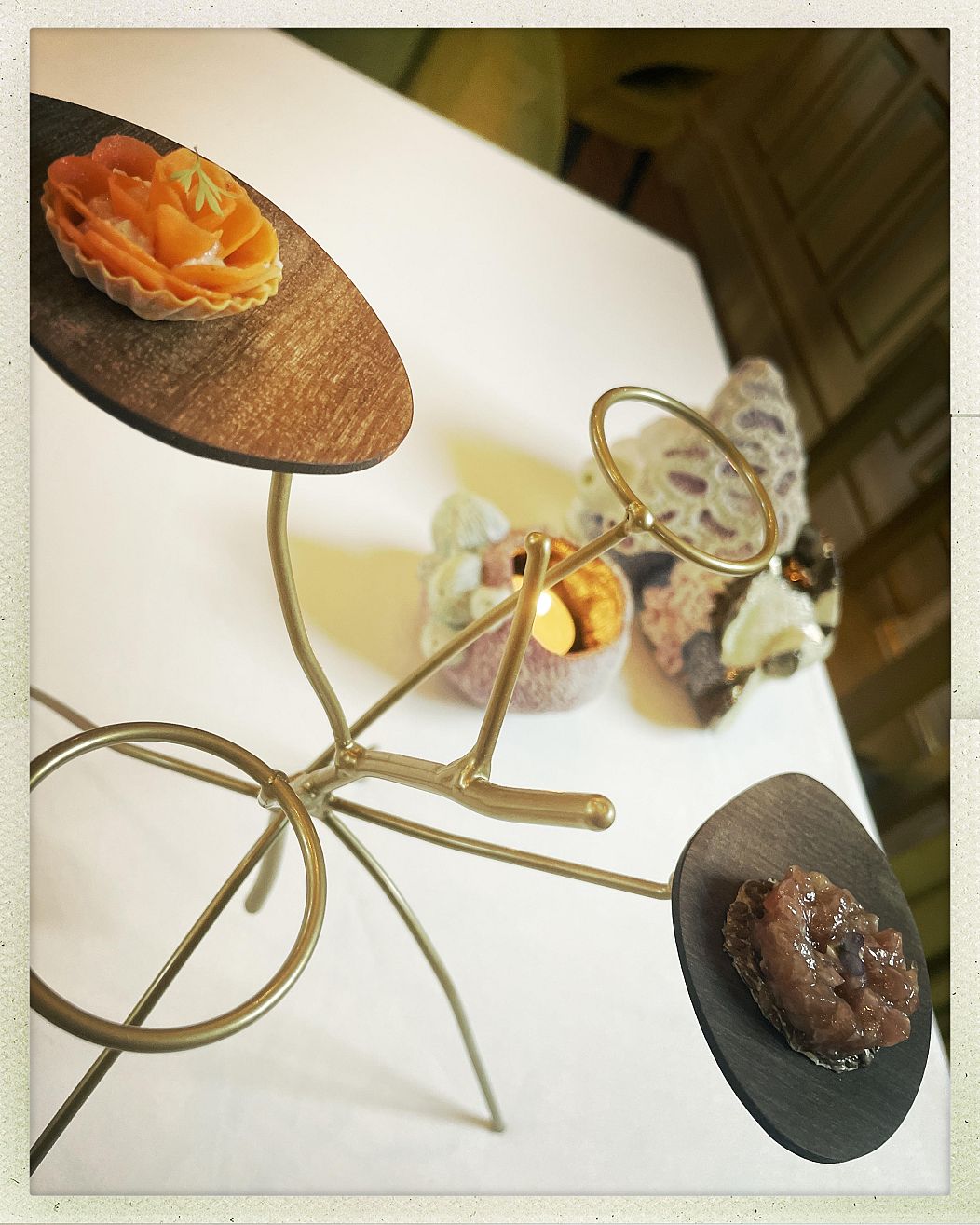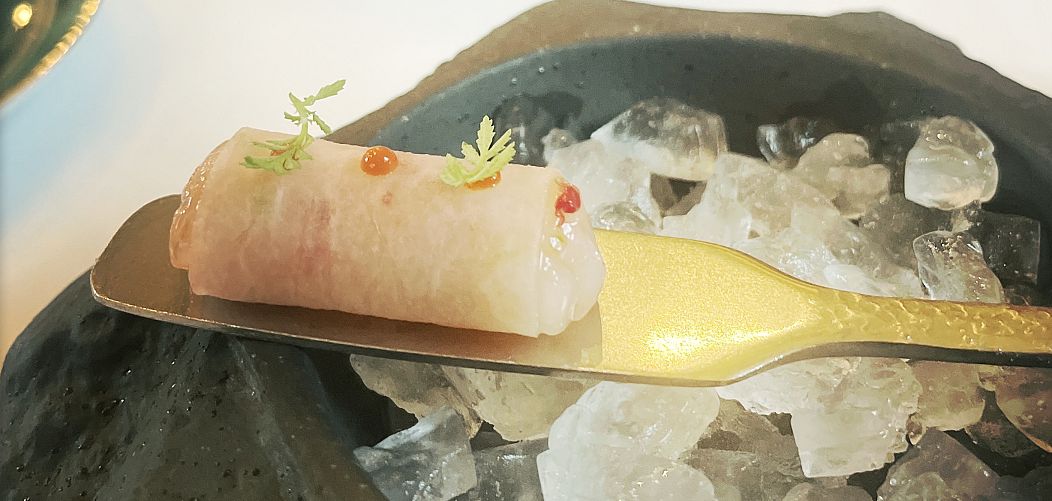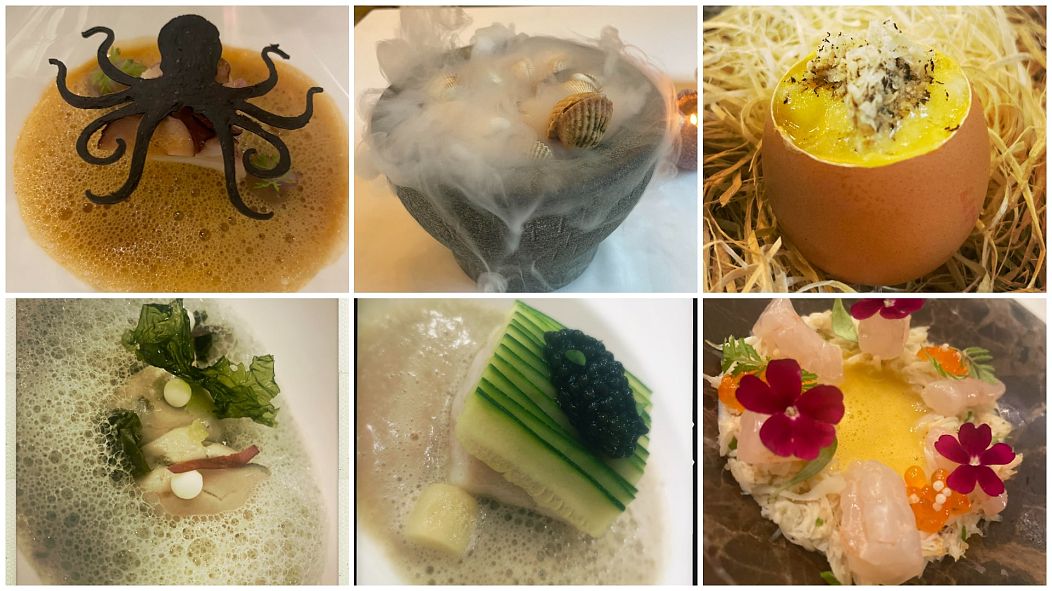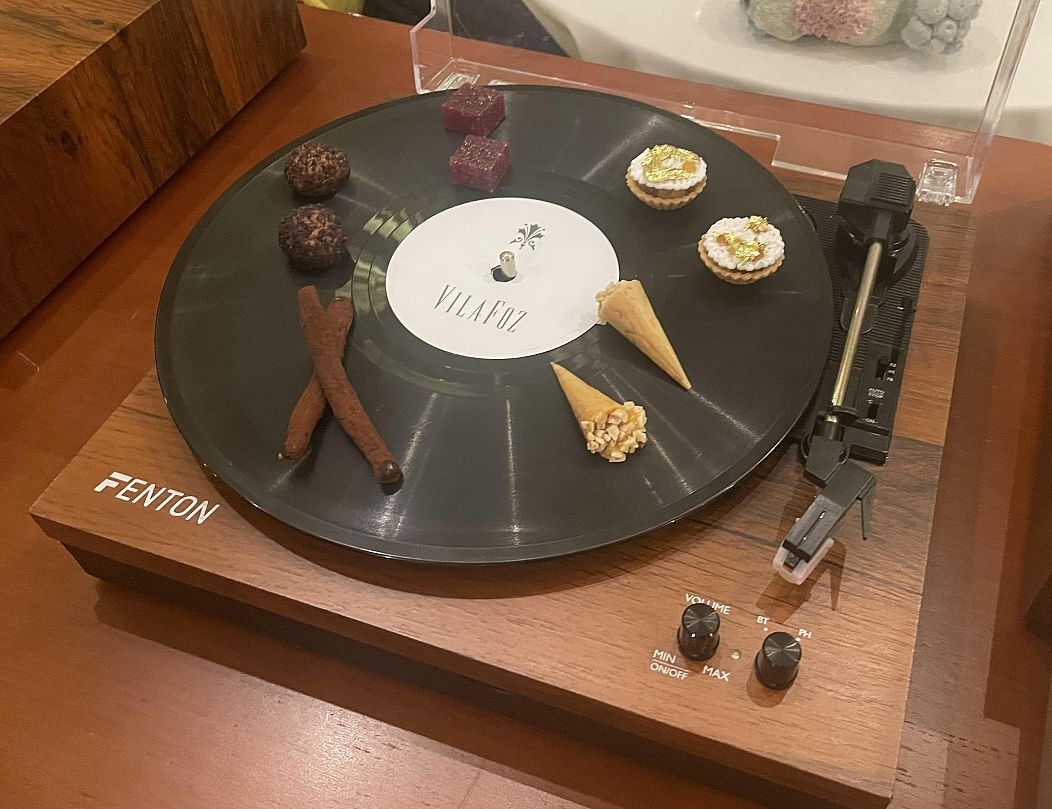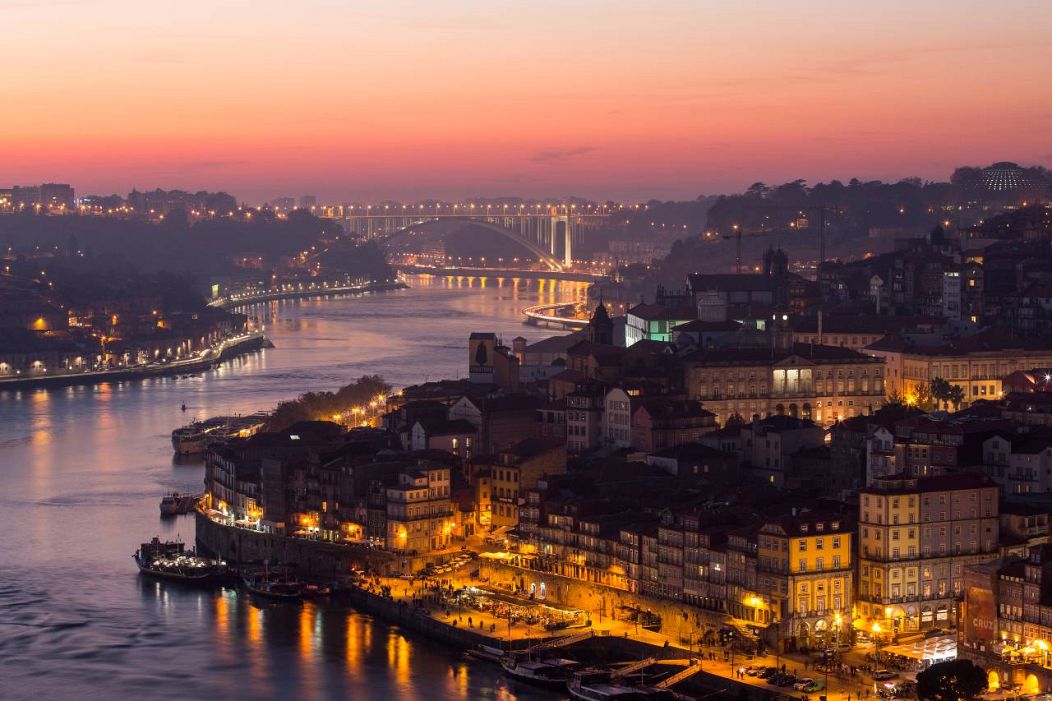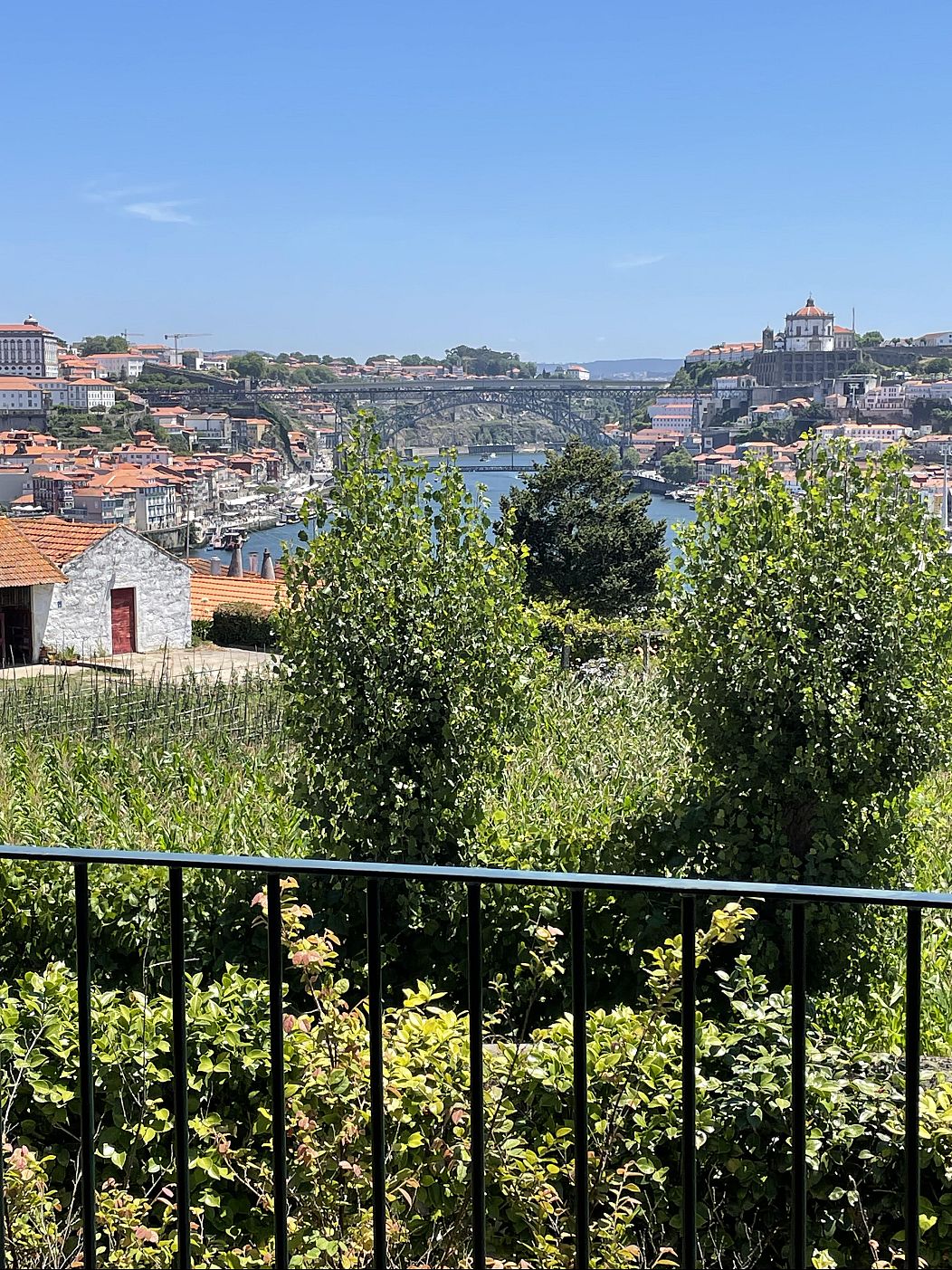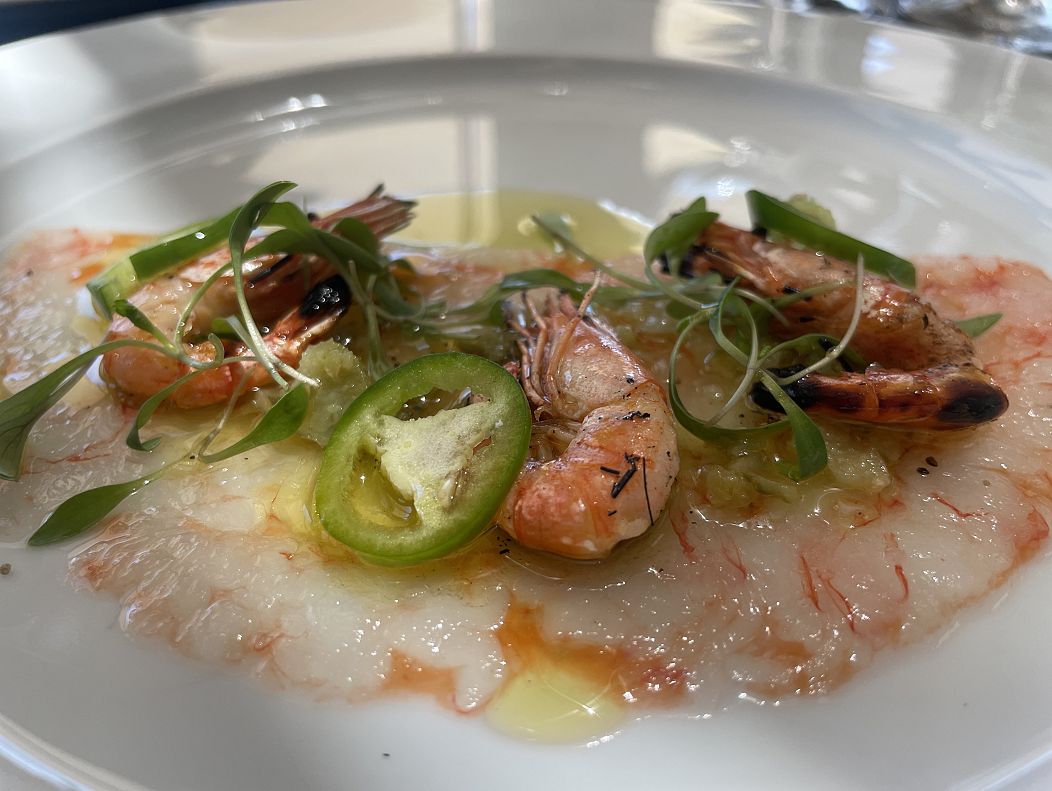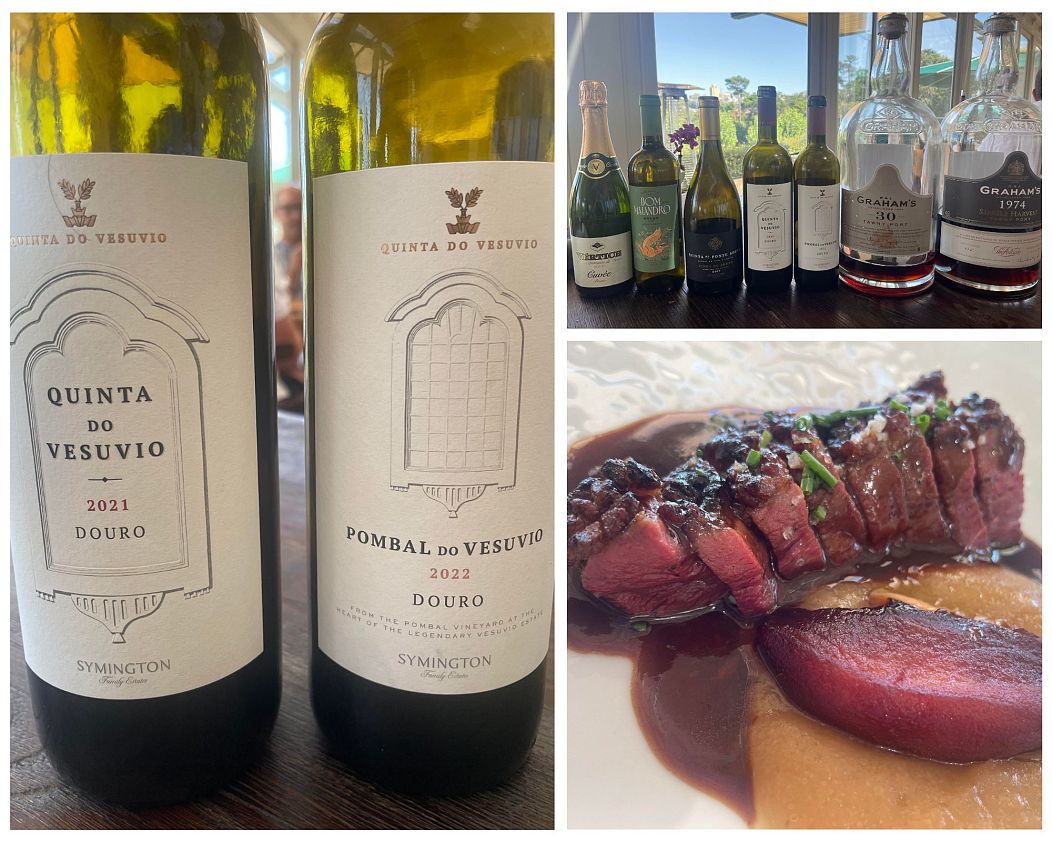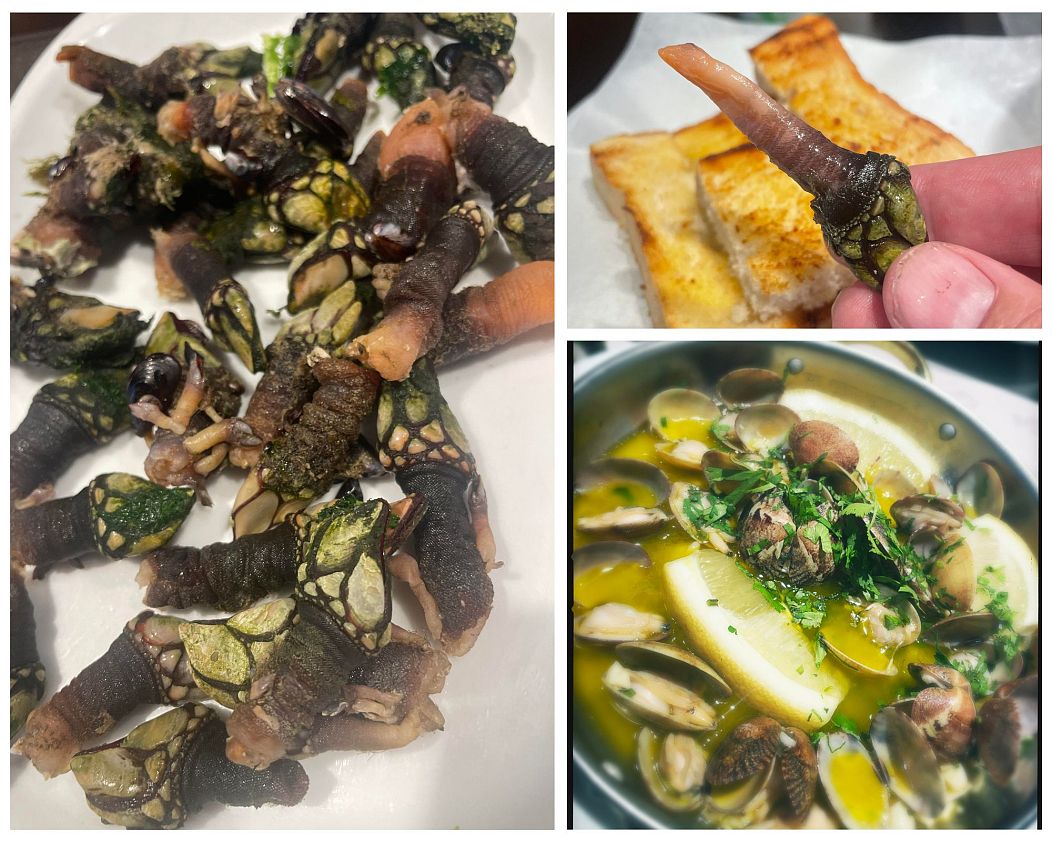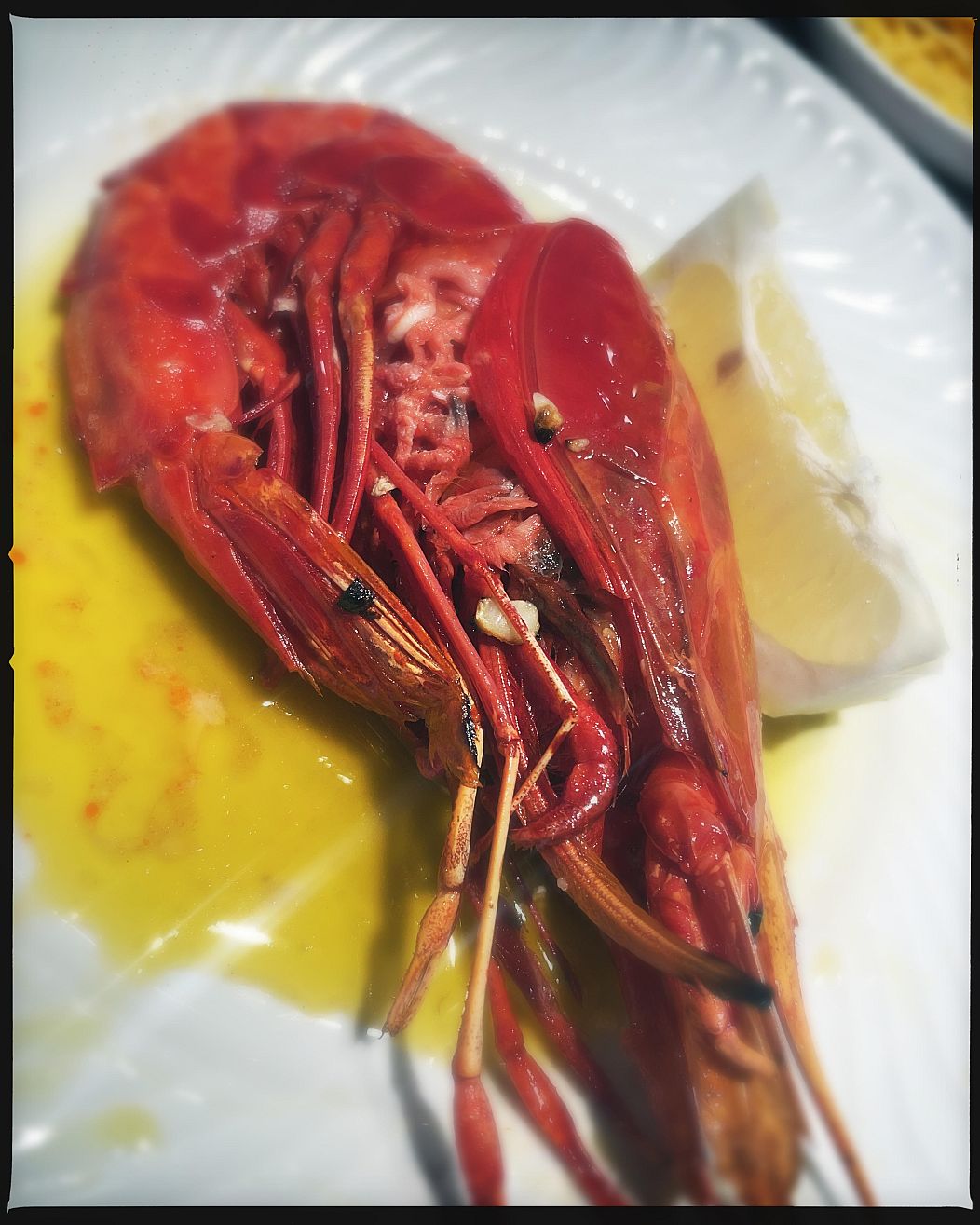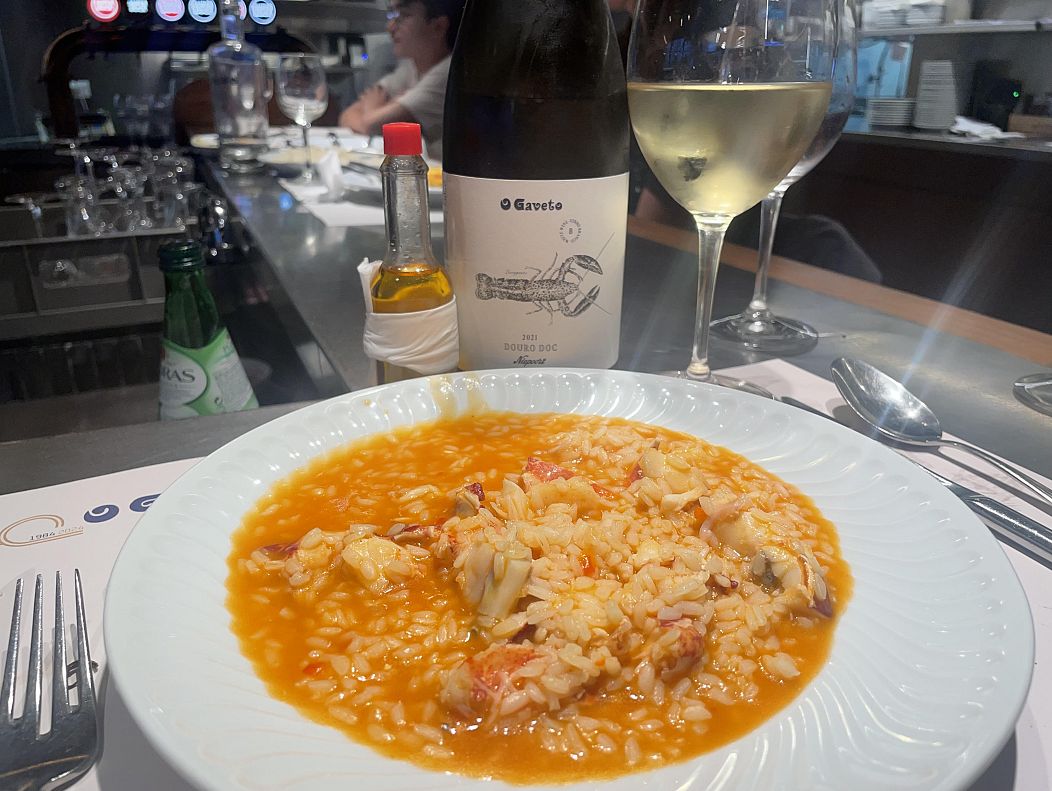With a stunning roster of dynamic, top-end restaurants, the northern Portuguese food capital is a breath, and a taste, of fresh air.
As with many European port-cities, Porto has a colourful history.
Initially a small settlement of Celtic tribes, centuries of maritime trade brought Romans, Visigoths, and Moors before falling under the rule of Portugal when the city became – like the wine that followed – fortified.
Commercial success with wine, textile and salt exports saw investment and infrastructure in the mid to late Middle Ages resulting in a number of impressive buildings and a charming network of winding streets flanked by colourful apartments.
Gastronomy is a route, arguably the finest, into understanding this history. Exploration and immigration joined forces over time to infuse even more colour and texture into an already handsome, if a little rustic, culinary history, and amongst the architectural juxtapositions of Baroque, Neo-classical and Modernist we find world-class kitchens with chefs who help us understand the city in the most exquisite manner – through taste and innovation.
The city is busy on a humid Friday evening. Throngs of football supporters begin to form a pulsing, winding sea of green and red in preparation for the Euro ’24 quarter final against France in a couple of hours. There’s no tension, just excitement. And that fits my mood as I wind my way down a steep hill, negotiate some roadworks, then skip up another incline to Largo Säo Domingos and head into the air-conditioned bar area of restaurant DOP.
DOP
This adventure is the brainchild of entrepreneurial chef patron Rui Paula and head chef Sandro Teixeira. Paula is the philosopher who invokes what he calls « ethno-emotional cuisine », using gastronomy to create emotional reactions to memory-evoking cooking that echoes the region’s culture and history. Teixeira is the wise-beyond-his-years artisan who adds even more flair and ingenuity to an already super creative canvass.
And in the midst of all of this…the staff have to work while the match is on. That’s dedication.
I’m the first in so I am able to wander around the interior with the maître d‘, who is also the daughter of Chef Rui Paula. The welcoming interior designed by architect Sérgio Rebelo is simple yet sophisticated with splashes of surprise. DOP’s philosophy is represented in image form with stunning artwork by native artist Paulo Brito. The stunning acrylic on canvas artwork ‘World on a Plate’ embodies DOP’s philosophy with Portuguese native artist Paulo Brito depicting global influences on food creativity. Even the entrance to the toilets present drama and uncertainty. Imagination abounds and I begin to wonder if things might not be as they seem when the plates arrive.
Rebelo also designed the staff uniforms where maritime blue complements the dark wood and caramel leather interior scheme while Japanese geometrics and collar lines embody the fusion in the kitchen.
My aperitif features the rather delightful Hendrick’s Neptunia (fittingly replete with coastal botanicals) with juice made from cucumber, lime and Jalapeño. A fresh kick to the chops, a real palate waker.
The tasting menu is entitled There is no future without memory, which is a fitting start to an investigation of how history and tradition inform fine dining is this city. The phrase also adorns the chef’s jacket. Across fourteen (that’s right, don’t eat breakfast or lunch) courses, the kitchen-theatre seen through glass doors takes you on a wild ride with cooking steeped in traditional dishes but also tracing the Sandro’s journey as a chef during which he spent two years in Asia.
Hot sourdough arrives with with olive oil from Portugal’s far north alongside sun dried tomatoes olive tapenade. Codfish in an ice cream guise with black olive powder in a charcoal butter cone gives you intense cod all the way through the delicate crunchy funnel. As introductory snacks go, it’s one of the best I’ve had and the little sardine bite with pepper and corn that follows it makes me want a whole packet.
Clam, bam, thank you San!
Clam cooked with tomato coriander and lemon foam is super creamy and rather subtle. Really well presented and demonstrating restraint with the flavours that finds finesse. The lightness of touch is further expressed in the lace-patterned Heart of Viana cutlery. Attention to detail is everywhere.
With the snacks, I’m served a traditional method (made in the same way as Champagne) brut from the oldest sparkling wine house in Portugal. The 600m altitude in the country’s Tavora-Varosa region helps the grapes retain their acidity in a warm climate. It’s bright, biscuity and reminds me to remember that Portugal do indeed make some alarmingly decent fizz. I’ve chosen to take the recommended wine pairing but there is a seriously impressive wine list here, made all the more accessible by having 28 wines available by the glass.
Scallop tartare is served with Oscietra caviar and sliced grape, a late harvest vinaigrette and a jus made from fennel and celery.
Beautifully textured micro-diced scallop and subtle flavours but I was puzzled as to why the team added late harvest vinaigrette if they also use a fennel and celery jus. Neither really comes through – although when tasted on its own it would work as a left field gazpacho.
Sandro likes to play with land and sea collaborations. « I worked in Thailand for one year and tried lots of celery, fennel and different things with seafood. Plus I don’t want to make the scallop too dry. It already has the sambal marinade (made with red chili peppers, vinegar, and salt) but without the extra elements I find it too chewy. »
Does it showcase the scallop less than the mixology? Perhaps, but it certainly works with the sommelier’s pairing of a 2018 Vinho Verde which has had a lot more winemaking in it than a traditional Vinho Verde – the mouthfeel much heavier due to barrel aging but still displaying enough acid to stick up for itself against the vinaigrette.
It’s 0-0 at half time and the staff are professionally stoic though they must be going privately berserk. However, in the kitchen, bigger things are happening. It’s not often you find a dish that succeeds in flavour, concept and humour. Rarer still do you accidentally scream once you realise what’s going on. Enter, THE SQUID.
Showstopper Squid
The squid body is made into tagliatelle and the fin is smoked to mimic bacon. Add a quails egg and grate with lemon zest over the top and you have, frankly, a masterpiece. Yes it’s a marine carbonara. And it’s brilliant. It’s ingenious, it’s fun and it delivers. This might go down as one of the greats.
Go to Napoli for pizza and go to Porto for Sandro’s squid carbonara.
DOP have a shrewd sommelier who paired the same wine (the Vinho Verde) with two courses as the sweetness that wasn’t so easily detectable with the scallop really comes out with the squid.
Shrimp Head Umami
I’m required to commit violence during the next course. « Smash the head of the shrimp and mix in the juices with the broken egg and the mushroom sauce that’s been poured on it. »
The nuanced melange has a very powerful, almost saffronesque, flavour. The broken eggs are a nod to tradition but normally served with ham. Sandro wanted to see if it could be elevated with the scarlet shrimp – aka Carabineiros — and it certainly comes into its own when you add the (unusual varietal alert) Algarve red made from the negra-mole grape. This wine reminds me of Gamay. It has the sweet raspberry and cranberry of Beaujolais and this cuvée has a little bit of residual sugar lifting you out of the shrimp head umami (which should have been a rock album title in the 60s) and freshening you up good and proper.
The smokey shrimp head juice has a flavour so intense and complex that I take a moment to fantasize about having 100 of them in the fridge at all times. Could that be the pinnacle of epicureanism? This dish really is ramping up the pleasure.
The rollercoaster continues in an evening that brilliantly eats up the whole night. A red mullet with a broth so vibrant that I thought the edamame was spring onion. Crackling with life, this electric soup. How does he achieve this?
Sandro winks. Oh go on, I plead. He relents. « Mirin, orange zest and kaffir lime, » is the answer.
I don’t just like his style because he shares his secrets and always attributes success to his team. I also love the adherence to the importance of memory. It’s something to which Heston Blumenthal anchored one of his most celebrated menus, and it’s arguably the most powerful emotional pull in the gastronomic universe.
« This is something Chef Paula and I share, » he explains. « We always love the memories of our grandma and grandpa’s food from a long time ago. It wasn’t fancy but it was full of flavour and that’s our soul, our passion for food in Portugal. »
He points me to another dish from the fourteen. Merendeiro (‘picnic’) rice. Chef Rui used to make the dish with his grandma. It’s a heat-blistered chicken skin broth that families decades ago used to make in batches and take out in a traditional basket to eat in the open. More smart moves from the somm as he chooses a Alentejo Pezga 2021 matured in amphorae to complement the nutty notes in the chicken skin.
Historic Migration
Served with the octopus course is a marine version of a Berlin Ball. It’s the third mouthful in a heady triumvirate but it comes with historical weight as well as intense flavour. During World War II, thousands of refugees fled to neutral Portugal, and amongst those were a large number of German Jewish families who brought a recipe for a small sweet cake. Sandro and team give it a maritime recalibration in the guise of a sea urchin profiterole which follows the flavours of octopus and greens and acts as a punctuation point, finishing the course unequivocally.
The end of the night is sweet for me but not for the team as, finally, Portugal are eliminated by France 5-3 on penalties. Regardless, apricot sorbet, explosive with caviar lime and finalized with homemade apricot kombucha is matched with a 20 year old moscatel from Douro which couldn’t be a better pairing – the clear apricot notes (and not even cooked apricot which is impressive after 20 years) are the harmony point. Brave faces all round.
Surprisingly, DOP has not yet gained a Michelin Star. It’s on the recommended list but the dizzy heights have not yet been achieved. If you want a prediction, it’s getting a star in 2025. I don’t wear hats but if it doesn’t receive the accolade I shall buy one specifically to eat.
I am full but the streets of central Porto are empty and silent save for the occasional bark of football-related vexation. I have 12 hours before lunch.
Euskalduna
If you’re not paying attention you might walk right past Euskalduna. Having had a pre-lunch livener at the nearby Casa Guedes’ rooftop bar (a Porto rite of passage), I do indeed walk past it only to reach the open door to the preparation area 30 metres down the same street. I nosily peek in.
« What are you prepping? »
« Mackerel, Tuna, Oyster… lots of things, » smiles the young chap in the monikered apron. « Everything fresh. »
Euskalduna means Basque in the Basque language, and it’s no surprise as Chef Vasco Coelho Santos once worked under Ferran Adria at the now mythical El Bulli. But now he rules the roost at this intimate gastronomic theatre in downtown Porto. Stone, iron, wood. Bring it on.
No need to order…
Those not familiar with the Japanese concept of Omakase dining simply need to know that you sit at a counter and the chef serves you whatever he decides is a good idea. A slick team of, at various times, between three and six, explain, entertain and enlighten during a menu described by one of the crew as « Ten courses and some surprises. »
The snacks arrive with a glass of Arinto. You get a lot of Arinto all over Portugal. It’s an indigenous white grape with a good acid line. Here though, they’ve plumped for the Azores version, Arinto dos Açores. This is a volcanic wine from basalt soil which brings smoke and sulphur, to go with the mirrors no doubt.
Turnip cream in a pastry cup with radish and caviar possesses the acidity to match with the Arinto. A one-bite cream explosion of earthy turnip with the caviar acting as salt, like an elevated smoothie.
Then there’s a pancake made from sourdough with oyster, seaweed salad and red onion pickle. A soft, hot cylinder of umami comfort where the oyster permeates every bite. Thoughtful cooking.
The tuna is aged a month which gives it a more developed flavour and texture, but Vasco is not finished with it yet. Sesame and curry-chilli is added alongside roe, purple shiso (from the mint family) and a jus made from rocket, garlic and bread.
The heat is on
Shrimp is flash cooked for 30 seconds to achieve maximum succulence, while dehydrated chick peas and onion adorn the top alongside pak choi – all in two styles of curry: green and madras.
I make friends with the fellow next to me. Renato from Milan. We’re both blown away by the flavours and the mouthfeel. The curried shrimp is another example of subtle heat. It never burns but a sensation of electricity coats your mouth and the chickpeas give the dish a crunch. And there’s an oil shining in amongst the melée which tops off the flavour circus admirably. It is, of course, made from that magical shrimp head that we met before in DOP.
This place has a Michelin star, you’ll not be surprised to learn.
Simplicity takes over in ‘moment 5’ when we’re given an amberjack that has been dry aged for 12 days. It’s doesn’t have the developed fishiness I expected at all and it truly melted in the mouth.
Prep, service and presentation occur in front of our eyes as the dynamic team power through the tight kitchen with the Euclidian spatial awareness of a Portuguese winger.
It’s the Japanese lightness of touch with Portuguese ingredients and I’m crazy for it.
Skate is traditional fish in these parts, and it’s normally boiled, but here is where you elevate so it’s pan cooked in noisette butter and served with cauliflower and courgette flower. It’s paired with a baga (red grape) wine with ten years of age which is mellifluous and matches the warmth without drowning out any flavour from the fish. A very fine pairing.
The sommelier here is bold with his choices and pairs the Iberian pork with a Madeira, in this case a Sercial, which although full of sugar is the least sweet style of this fortified wine. The pork is caramelised which informs his choice, as do the cherries in the accompanying salad.
I must mention the carrot gum made with sugar and citric acid. It’s a knockout English corner shop bootlace jack-in-a-box served with ginger and lemongrass ice cream. It’s also an alarm clock to wake me from this layered fever dream.
Ask for a taste of Umeshi. It’s a green plum liqueur that has been fermented in stainless steel for three years followed by a further two in old oak barriques.
Vila Foz
Foz is a Porto’s seaside quarter. The neighbourhood used to be a simple fishing village but grew in desirability in the 19th century and large summer houses began to spring up along the front, owned by wealthy families who prized the wellbeing benefits of the iodine-rich coastal waters. These seasonal residences became permanent over the decades and one such structure is now Vila Foz a five star hotel with a Michelin Star restaurant.
Architect Gabinete Miguel Cardoso Arquiteto and designer Nini Andrade Silva adhere to nineteenth-century grandeur while stylishly incorporating modernity, and in the kitchen, Arnaldo Azevedo and Tiago Lopes similarly blend tradition and innovation.
« The popular food in Portugal and across Europe is the food for the poor, for the working people, » says Tiago. « We take the soul from this food and we put in our menu. When you come to Portugal, you have to eat Portugal. Of course, there are the more refined ingredients in this type of restaurant, we have the caviar, we have the scarlet shrimp, we have the oyster because you’re paying almost 200 euros for the meal and you cannot eat fries. »
There seems a reverential hush in the main dining room, which has a Regency feel in pastel green with lime curtains. There is a hint of literary salon and it may be more fun with everyone smoking but I’m very glad they’re not.
A wrought iron chandelier spiders above me with traitors gate spikes as my Taj Mahal cocktail arrives. I’m told it contains caramel masala. It has the tang of a limoncello spritz with a hint of the cubeb botanical that currifies Bombay Sapphire. It’s lasting finish is a good opponent for the first bite, linseed nougat with tuna belly and fermented ginger. Powerful and fat.
A showcase of preservation techniques
A wonton tartlet with smoked eel mousse and homemade carrot pickle is three historic techniques in one single mouthful. Smoking, salting and fermentation have been used for millennia in the area of food preservation. This striking eel tartlet embodies all three. It is also a flavour bomb – it’s super fresh yet the eel carries its character through to the end.
It’s early in the evening so the vibe is slightly muted but there’s so much fun on these redolent, exciting plates that I feel I’m looking through a kaleidoscope.
I realise that the centre of the aforementioned chandelier is the hoop of a wine barrel. Nini Andrade Silva’s immaculate finishes are in evidence everywhere you look. Attention to detail being the mark of the greatest designers as well as the finest chefs.
The scarlet shrimp head was expected after my previous experiences, but serving it with a daikon cannelloni would never have occurred.
It’s a central theme in all fine dining scenes. How do we tell our story in a novel way?
Perhaps this is best exemplified here at Vila Foz in the Octopus plate.
« It’s the king of our seas, » says Tiago. « I salt, cure and smoke the belly. It’s from the north of Portugal, very, very traditional, with the sauce made from beans which is like our historic tripas dish, but it’s a bean stew. And you have as well very traditional onions from a small producer near the hotel. It’s a very special plate because you have the flavour, you have the soul of our kitchen. »
The belly of the octopus here mimics the tripe, so you’re getting the story but with heightened ingredients.
An organic egg from a Lusitânica black chicken, native to north-western Portugal, is truffled with potato. The depth of flavour closes my eyes.
The oyster with marinated seaweed and oyster sauce is absolutely relentless in its showcase of the oyster flavour – every step is designed to heighten the oysterness of this dish.
Then a touch of Brazil in the form of Moqueca sauce with spider crab. Chucks of shrimp and pulled crab are deliciously succulent throughout the subtle spice. This is matched with an acidic alvarinho and it works tremendously.
A plate with potato and mushrooms and lettuce tastes insanely meaty. Tiago loves this dish and so do I.
« It’s the flavour without the fat. It’s vegetarian. But we eat and we think immediately of the traditional suckling pig that you have in the south of Portugal, » he explains. « We create this flavour with just butter, black pepper, and garlic. »
Red mullet with sea urchin and mussel ‘nage’ appears – the warmth of the broth is calming and I sneak myself towards the suspicion that every fine dining restaurant here makes a massive pan of scarlet shrimp head sauce to make everything taste sublime.
The vital energy and enthusiasm of this chef is clear to see (and taste) but he also has a passion for great music, and I can’t not mention the theatre of the petit fours.
Theatre, tradition, flavour and humour. Bravo.
Time for bed. Need to fit in a run before lunch in the hope that I can burn the thousands of calories today has provided.
Vinum
A view to kill for.
Before the Brits started exporting port from this side of the river in Vila Nova de Gaia (to avoid paying tariffs) the southern bank was empty. No residences just riverside.
Now it’s sprawling and one hilltop houses the two giants of the Port wine industry Graham’s and Taylor’s. English names abound and I’m reminded of the Anglo-Portuguese alliance which has outlasted any other worldwide. Last year was the 650th anniversary.
Graham’s Port Lodge stares out onto the teal Douro as trains glint their way across the iconic Dom Luís I Bridge, that appears as a proscenium arch above it, framing the alluring, calming vista.
Vinum is the lodge’s restaurant and is a seriously good choice for lunch. A white port spritzer on the pretty terrace then walk through to the light, airy atrium for gluttonous contemplation. It has been here for 15 years but still feels very new. But if you want a darker, more visibly oenological experience, ask for a table in their main room which looks onto the 19th century cellars.
It’s time to get my wine on.
A sparkling wine made in the traditional method from the red Touriga Franca grape that you’ll find in a lot of port and three indigenous white grapes, Arinto, Gouveio, and Rabigato is the livener.
Fine bubbles and subtle autolytic notes make a brilliant match for my little hummus and hazelnut kick off snack.
I decline the sourdough but it appears anyway with the promise that I’d made a mistake saying no. My host, Albert, was quite right and has my eternal apologies.
Shrimp carpaccio arrives with jalapeños offsetting the flamingo-pink flesh. The sparkling melange deals with the chillies niftily and the soft shrimp, bathed in gorgeously plump olive oil is fresh, bright and exciting.
I get my hands dirty with three whole shrimp that accompany the dish. It’s a great start. After having eaten a lot of French cuisine of late, it’s great to be back among spices.
Bom Malardo (good hustler) is a 2023 white field blend which changes varietals each vintage depending on grape quality. While Italy has the most different indigenous varietals in the world, Portugal seems to use obscure grapes much more readily. Here we have Viosinho, Gouveio, Rabigato, Arinto, Moscatel Galego Branco. This blend is probably closest in ordinary wine bar terms to Sauvignon blanc. Grassy citrus and a blush of peach.
Portuguese red wines already have a reputation and time has seen them rarely obscured by their more famous fortified brethren. Here I have found the best yet.
Albert brings two wines to have with a main dish of duck. Both from the much-lauded, Symington Estate-owned Quinta do Vesuvio domaine (built in 1827) is one of only two estates that can declare a vintage port in any year they please. But were on the non-fortified wines here. The Pombal do Vesuvio 2022 has been in French oak for six months and has a decent nose of black cherry, smoke, clove, black plum something approaching eucalyptus. Intensely flavoured with baked plum and cherry, it’s a great match for the duck which is topped with chives, served with apple puree, drunk port apple and Foie gras and cooked by a chef who knows how to deal with red meat.
However, Quinta do Vesuvio 2021 has stolen my heart with its pronounced nose of plum, chocolate, cherry, rose water, and something resinous – could it be pine resin? The palate is equally intense with full body and 14.5 abv but it possesses an ethereal quality due to a super silky mouthfeel and excellent balance of its acid and tannin structure. Profound winemaking.
Both wines work with with the duck but the Quinta do Vesuvio possesses the substance to truly achieve harmony and elevation. The Maillard effect on the seared and salted duck skin joins forces with the sneaky, hidden Foie gras and the silk wine to create a taste sensation difficult to parallel.
Transitioning to Graham’s ‘6 grapes’ port ruby reserve is a smooth gear change thanks to the strength and structure of the previous Douro reds but there is, as one would expect, a serious uptick in sugar.
My thin crust apple tart with nata (cream) ice cream (reminiscent of fior de latte) goes well with the 30 year old tawny as the caramelised nature of the apple edges harmonize with the caramel notes from the aging process. There’s still plenty of acid in this despite comprising of vintages around the 30 year mark.
A nice find on the hill with a friendly team. I need a walk.
O Gaveto
Dinner at O Gaveto is the real deal. Not exactly spit and sawdust but if you want absolute authenticity, you’ve got it. A review of the Porto fine dining scene would not be complete without this place, yet it hardly appears in any of them. You won’t find it in the hallowed Michelin Guide, but don’t be fooled, Portugal is here.
Goosehead barnacles (Percebes in Portuguese, which means ‘understands’) are a strange delicacy. They are not cheap because of the process of retrieving them. Divers have to pick them from slippery rocks which are continuously bombarded by extremely strong waves. So they have to time their dive to co-incide with the break between waves. I had to be told how to open them as it was not remotely obvious. A twist here, a pull there, and a little digging with the nails reveals a shiny tooth of flesh that looks, somewhat distractingly, like a dog’s penis. But they were abundantly tasty. All thirty of them.
I’m mad about clams, and they come very simply in garlic and olive oil. I start making overtures with a fork.
“Don’t be shy,” says one of the blue-shirted team. “Pick it up and suck it out.” I do as I’m told. A lady along the bar laughs and I’m not quite sure what it is I’ve done but I smile and take whatever it is on the chin, which is itself soon covered in garlic oil.
This is fun, I think.
I’m gulping down oil, parsley and huge chunks of almost raw garlic and I’m like a pig in the proverbial with my nice minerally alvarinho.
Let’s face it, no meal that looks to tradition and history is going to ignore the Scarlet Shrimp. « There he is, » I say to myself.
Simply served in olive oil and with a wedge of lemon. The team let the Carabineiro can speak for itself. And now I know how to attack it. Or at least I thought I had it down. My shirt can testify that I still have some way to go.
Celebrating 40 years of operation in 2024, O Gaveto’s signature dish is their blue lobster rice and it immediately obvious why. It has a fireplace-in-winter warmth and a depth of flavour that holds the lobster in its cradle. Fishermen deliver blue lobster in high season here three times a week.
I am aware the word succulent has been rather comedically associated with Chinese food in recent years but it’s a word I don’t feel I can avoid when I attempt to describe the lobster in this dish. The sauce made from lobster shell jus which is then added to a stew with onions and olive oil.
To pair, I’m given another field blend white but it tastes like a Burgundy. It’s made for them by the team at Niepoort.
Opened in 1984 by current boss João Silva’s father, O Gaveto strives to maintain tradition and make people feel very much at home.
« We have a huge diversity of cuisine in Portugal and if you travel 100km you find something different each time. I want to serve traditional food because it’s the best food, » he says.
Dry almond cake is served with 2008 Madeira that has been matured in the traditional Canteiro manner, a long and resource-intensive process associated with higher quality Madeiras. The wines are matured in old oak vessels in a warm environment of between 25 and 40C. This may be a loft or warehouse, both of which are naturally heated by the sun. The barrels can be up to 700 litres in size, and left with a small headspace of air, to promote the development of oxidative flavours such as burnt caramel.
Much Madeira is made from white grapes but this is made from the red grape, Tinta Negra. This is a medium dry Madeira which means it’s still quite sweet. And it squares up delightfully to the sugary glaze on the cake. The oxidized flavours mirror the nutty sweetness.
I talk a little about my experiences in Porto with innovation, elevation and rollercoaster tasting menus. João reflects on this. He doesn’t ask where I’ve been.
« I worry that younger chefs are not keeping this cuisine alive, » he says. « They want to be on a Michelin list but if they make real, authentic food and make people feel at home, they will be even more successful.”
